“I am always drawn to the lines in everything I see,” she says, “the beauty of the planes and intersections, the movement that happens when a person, or something in nature, is perfectly still. The intense honesty of what makes up a living form, rather than an easier to please softness. My passion for cultural subjects—such as a song, a musician, a writer, or a performer—often evolves into a need to release my adulation in the form of painting with gouache.”
Tabitha Lahr was born in Brooklyn, and raised in Queens, New York. She received her BFA from The School of Visual Arts, with a major in illustration. In 2004 she moved to San Francisco, where she still resides, and she contributes to various group shows throughout the Bay Area.
I first met Tabitha in 2005 while we were both working at the same publishing house in the Bay Area; her work in illustration the perfect foundation for book design. She’s smart and spunky, and has a great eye for great art. She has a no nonsense attitude (after all she is a native New Yorker!), but she’s the only New Yorker I know that can deliver a hard truth with an incredibly sensitive look in her eyes. I’m certain that’s how she sees her subjects, and what informs the essence of her visual works.
Recently, I had the chance to catch up with her about the work she’s been creating and showing lately, and get more insight into her creative process.
The foundation of your compositions uses the spiral shape. What draws you to this shape and how does it communicate your artistic message?
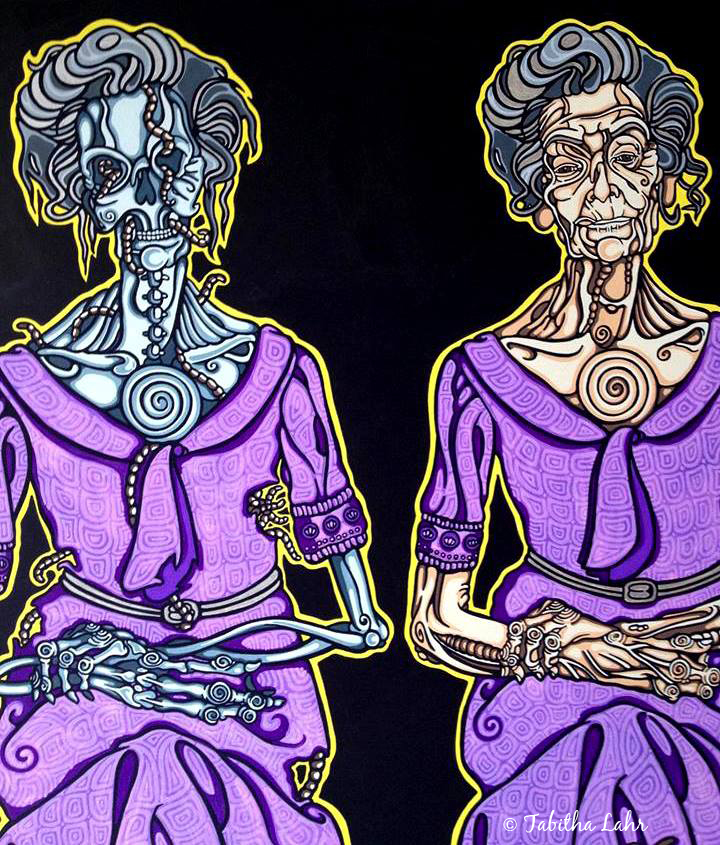 When I look at a person’s face, or body, my eye begins fractionalizing everything, which creates a lot of bold and hard lines. I like to incorporate the spiral as a means of creating a feeling of fluidity and cohesiveness. A spiral also gives the illusion of a continuous energy, as it implies the line will never end. Discovering where the spirals will sit on my subject is my favorite moment of drawing. You have to choose wisely though—too many spirals are counterproductive and creates busyness.
When I look at a person’s face, or body, my eye begins fractionalizing everything, which creates a lot of bold and hard lines. I like to incorporate the spiral as a means of creating a feeling of fluidity and cohesiveness. A spiral also gives the illusion of a continuous energy, as it implies the line will never end. Discovering where the spirals will sit on my subject is my favorite moment of drawing. You have to choose wisely though—too many spirals are counterproductive and creates busyness.
When choosing a subject to paint, what are your considerations? Why do you choose the subjects/portraits that you do?
There are two main reasons why I choose the subjects I do:
First, I’ve spent a lot of time reading, listening to, watching, or thinking about the person with intense interest, and painting them is a culmination of my fascination. For instance, shortly before I painted Charles Bukowski, I read all of his books and had the movie Barfly on loop on my television for quite some time. After I painted him, I moved on to someone else. I should have directly moved on to Faye Dunaway because Barfly has the coolest female bar fight scene I’ve ever seen, and she’s badass, but she’s on my list for sometime in the future.
Second, The subject’s face is outrageously visually interesting to me. I’m not really a fan of Barbara Streisand, but she has a very unusual face that I can’t take my eyes off of. But I’m very much into large noses—strong large nose profiles.
What is your creative process like? Do you sketch first and then paint? Freehand?
I’ve never been a sketcher. It’s something I wish I were, because I know it’s what you’re supposed to do!
But instead, first I Google the person and spend a while looking through a lot of photos, until one stands out to me as appealing. (I tend to lean towards somber or serious photos of people.). Then I print it out and stare at it for, oh, about three days. I spend those staring sessions mapping out the person’s face in my mind and looking for all the lines. Then when I feel like I’ve stared enough, I go directly to the final canvas or mason board. First I draw, then I black outline the entire drawing with a small paintbrush (I’ve often had friends tease me about painting a 16” x 20” painting with a size 1 round paintbrush). Then I paint through all the color, and then I re-outline the entire drawing again with the black. I know that the initial black outline might seem unnecessary, but it’s essential to the organization of my brain. I can’t move on without that step.
I think my favorite of these is the Willie Nelson portrait. When selecting this, how did you envision his braids would appear on canvas before you painted them?
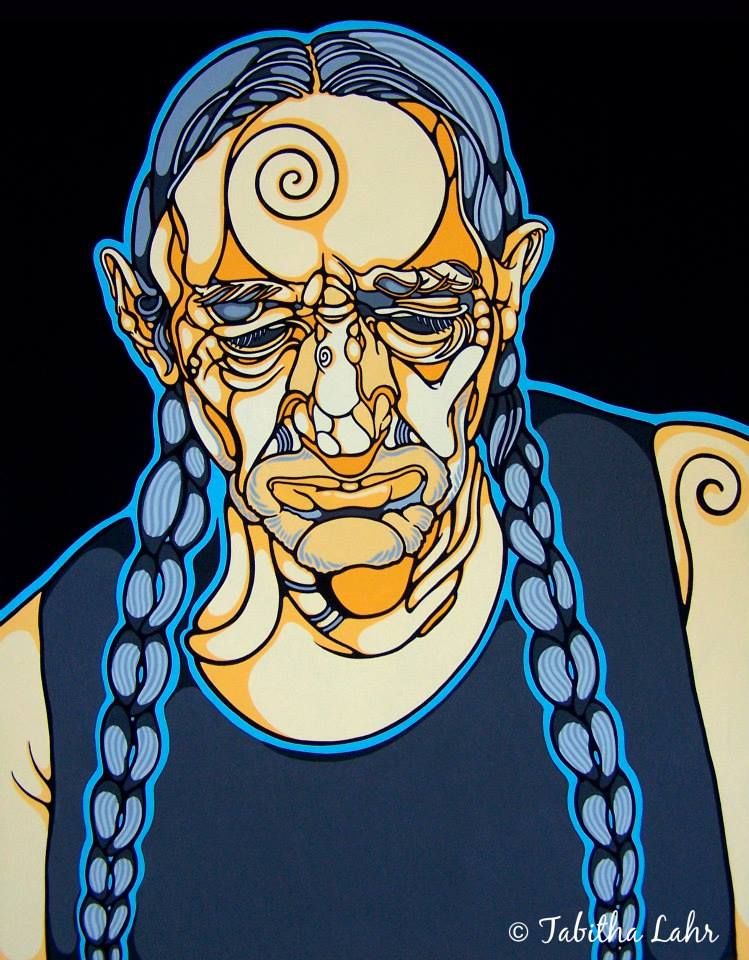 Holy smokes, Willie was one of my toughest subjects! Those braids made me stop during drawing and do a lot more staring. I was surprised at having difficulty with them because I thought, “Pshaw, braids will be easy.” What really made them come together is when I came to the conclusion that it was necessary to have that little tiny empty space in the middle of each row. Without that, it just looked like a solid mass, and didn’t have the right sense of flow. So I did envision them initially, but they turned out to look nothing like what I had envisioned.
Holy smokes, Willie was one of my toughest subjects! Those braids made me stop during drawing and do a lot more staring. I was surprised at having difficulty with them because I thought, “Pshaw, braids will be easy.” What really made them come together is when I came to the conclusion that it was necessary to have that little tiny empty space in the middle of each row. Without that, it just looked like a solid mass, and didn’t have the right sense of flow. So I did envision them initially, but they turned out to look nothing like what I had envisioned.
The San Francisco bay area has a long-standing reputation for rock n’ roll poster art and psychedelic art. How do you feel your work fits into this or goes beyond this tradition?
When I was a teenager, I owned a really big book that was just pages of Fillmore posters, and I was obsessed with it. It was my favorite art to look at, and this is before I’ve ever done hallucinogens. So I attribute my style to a mixture of my love of psychedelic poster art and Alphonse Mucha.
How I go outside of this tradition is that I don’t use text within my art, and my subject’s faces are very detailed. The Fillmore posters tend to have very complicated backgrounds around the subject and the faces are relatively simple, which I feel is the opposite of my compositions. What I do have very much in common with the Fillmore poster art is the feeling of flow.
I also love this portrait of Jesus. I am curious about your own background, why you chose to paint this figure, and what this work means to you.
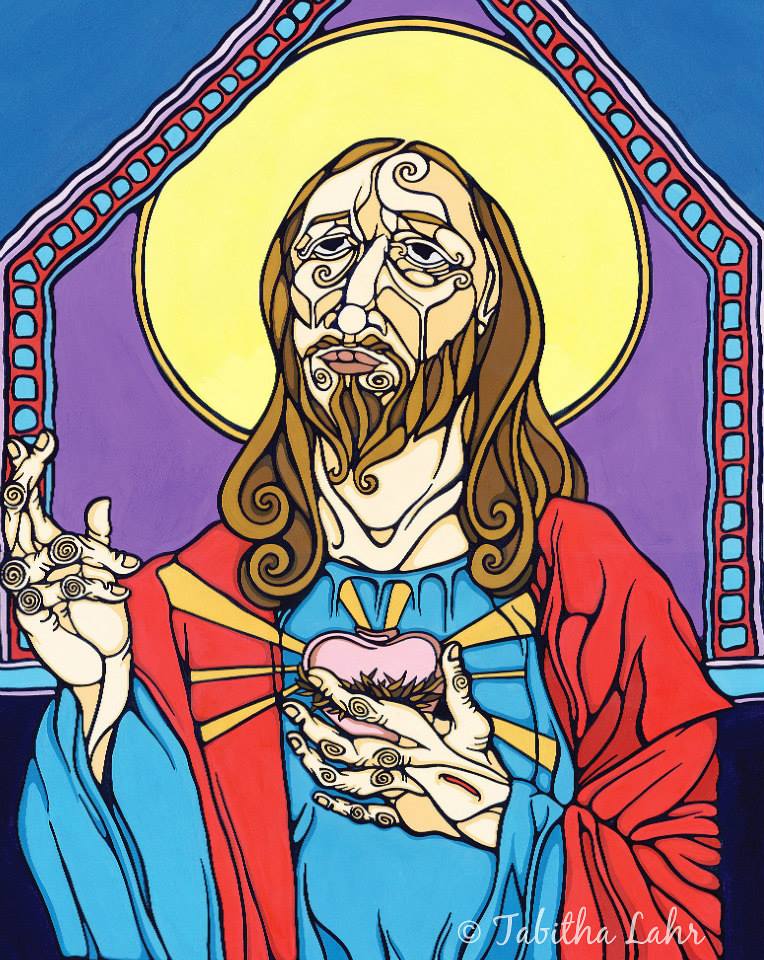 My grandparents are from Italy so I was born a Roman Catholic, and attended C.C.D. as a child (Continuing Catholic Development). So I was a relatively religious kid. I use to hold an imaginary mass in my bedroom that consisted of all stuffed animals, even though my mother told me that was blasphemous, and I thought bibles were beautiful books.
My grandparents are from Italy so I was born a Roman Catholic, and attended C.C.D. as a child (Continuing Catholic Development). So I was a relatively religious kid. I use to hold an imaginary mass in my bedroom that consisted of all stuffed animals, even though my mother told me that was blasphemous, and I thought bibles were beautiful books.
But as I got older, I got confused about Catholicism and tried to seek out a different religion that would make more sense to me. I almost became a Buddhist, and started giving away possessions, but I ultimately became agnostic.
As an adult, doing a portrait of Jesus was far from my mind. But I had a boyfriend whose grandmother was extremely ill and in the hospital. She loved Jesus and found comfort in his image, so I painted him for her. I emergency painted him in two days and federal expressed it overnight to Florida in hopes that it reached her before she died. Fortunately, she lived a lot longer, and she gave me the greatest compliment I ever got for a painting: she said that my painting was the only one she’s ever seen of Jesus where his eyes captured real pain.
I am curious why you chose to paint Bukowski in grayscale and how that conveys a particular message about him and his work, and the mark he made on the literary scene. Can you tell me more about this?
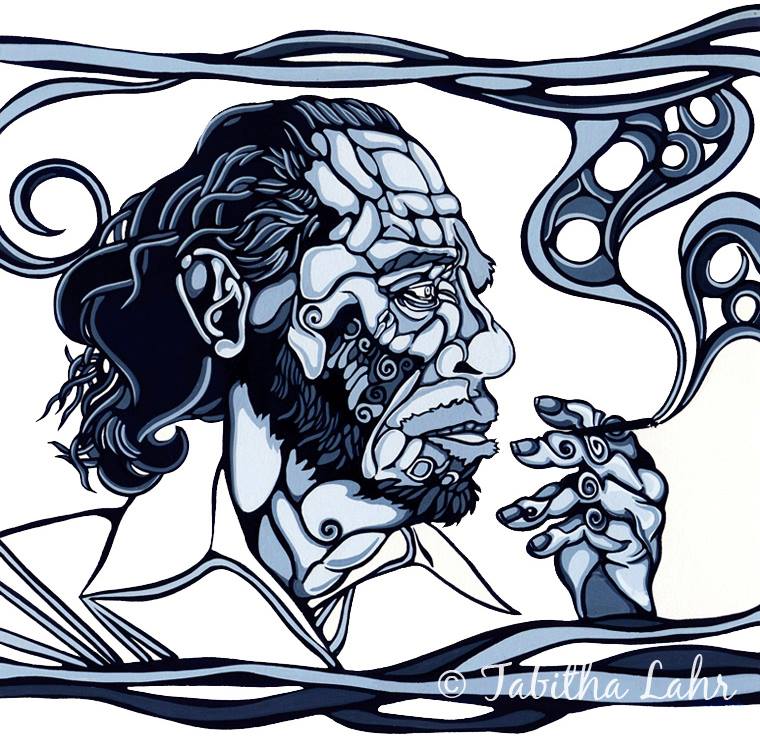 Bukowski is a particularly important painting to me. He’s the first painting I created after a five-year artist block. And when you don’t draw or paint for that long, you start wondering if you can even do it anymore. Creating him helped me prove a lot to myself about what I could do, and he remains my favorite painting I’ve ever done. I was interested in showing him in grayscale because he was a sad, but complex figure. A person who was so talented, yet so messed up. And I tried hard to depict all of his skin blemish marks as something beautiful, because he thought he was so ugly. A person who dislikes himself so much shouldn’t be in full color.
Bukowski is a particularly important painting to me. He’s the first painting I created after a five-year artist block. And when you don’t draw or paint for that long, you start wondering if you can even do it anymore. Creating him helped me prove a lot to myself about what I could do, and he remains my favorite painting I’ve ever done. I was interested in showing him in grayscale because he was a sad, but complex figure. A person who was so talented, yet so messed up. And I tried hard to depict all of his skin blemish marks as something beautiful, because he thought he was so ugly. A person who dislikes himself so much shouldn’t be in full color.
Your Bill Murray painting was recently featured in a group show. What prompted you to create something so whimsical in relation to this figure?
Yes, my Bill Murray was shown in SF
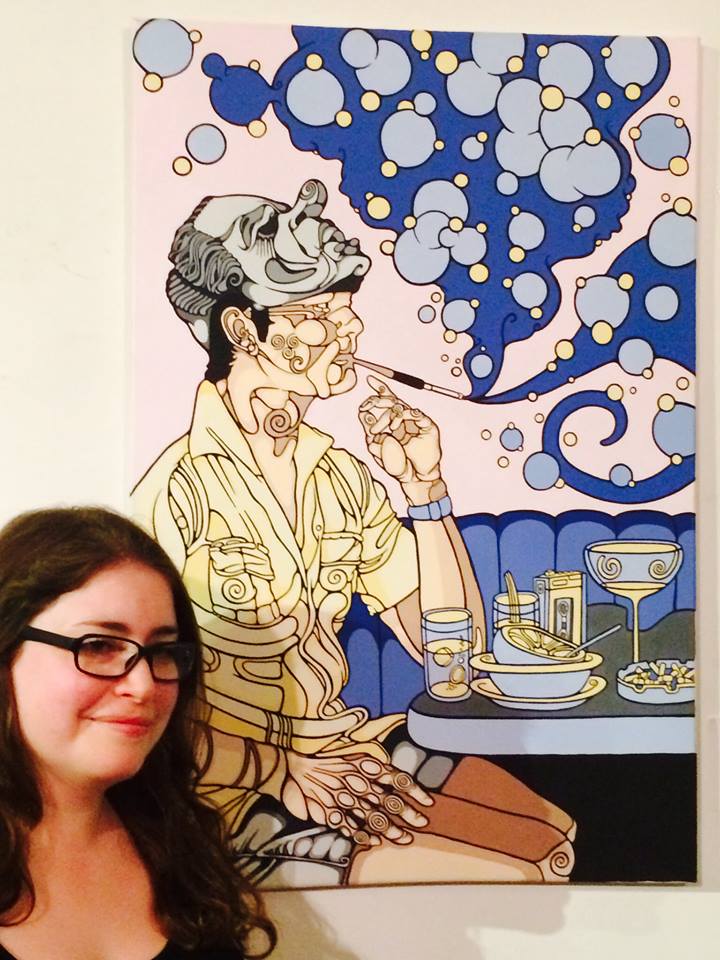 Weekly as part of a promotion for the huge group show The Murray Affair: The Bill Murray Art Show, which took place at The Public Works SF on August 8th, 2014. That art show was curated by Ezra and Julia Croft, who continue to put on cool celebrity-themed art shows, that feel like giant parties, in San Francisco and Los Angeles. I participate in their shows regularly because the events are really fun, and the Crofts are really wonderful people.
Weekly as part of a promotion for the huge group show The Murray Affair: The Bill Murray Art Show, which took place at The Public Works SF on August 8th, 2014. That art show was curated by Ezra and Julia Croft, who continue to put on cool celebrity-themed art shows, that feel like giant parties, in San Francisco and Los Angeles. I participate in their shows regularly because the events are really fun, and the Crofts are really wonderful people.
I chose to focus on Bill Murray in the movie Where the Buffalo Roam, because I thought it was a great way to paint two people who I love in one: Bill Murray and Hunter S. Thompson. And there’s no way I could pass up on the opportunity to paint a Nixon mask! Capturing the feeling of Hunter S. automatically creates whimsy. (Tabitha with Bill Murray painting © Sparkle Obscura.)
There is something reminiscent of a Clockwork Orange in the portrait of Judy Garland. What message do you want to convey to viewers about Judy and the importance of her and her work as an actress?
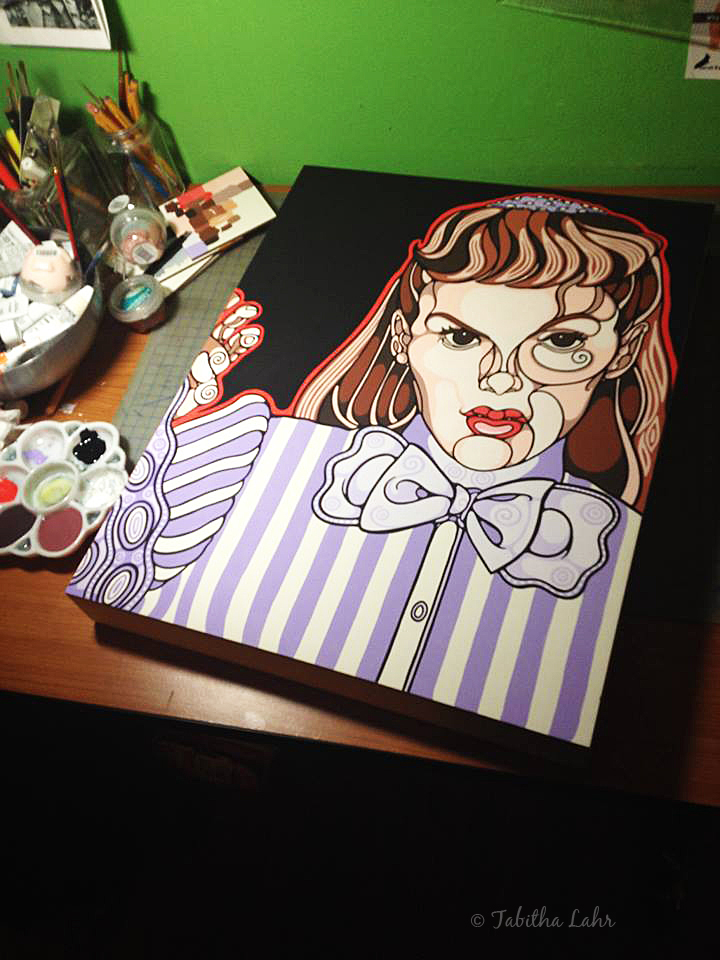 It’s interesting to me that you say that, because I just showed her at an event and someone told me that she looked like a murderer.
It’s interesting to me that you say that, because I just showed her at an event and someone told me that she looked like a murderer.
Judy Garland is a tragic figure to me. People judged her for being a drug addict, but drugs were initially given to her as a child when she worked at MGM. Uppers to give her energy to perform, and then downers to help her sleep. Where can a life end up when you start with that from your mentors at 14? So I chose to take a photo of her from the movie Meet Me in St. Louis where she’s gazing out the window at the boy next door who she has a crush on; perfect dress, perfect face. Her face was actually so perfect at that point in her life, that I had to think hard on creating lines.
I’ve heard that John Carpenter was inspired by Meet Me in St. Louis, so maybe it’s fitting that she looks like a murderer.
The use of a psychedelic aesthetic in relation to the subjects you choose gives them a sort of humorous effect. What do you hope that viewers take away from your work and the experience of viewing your work?
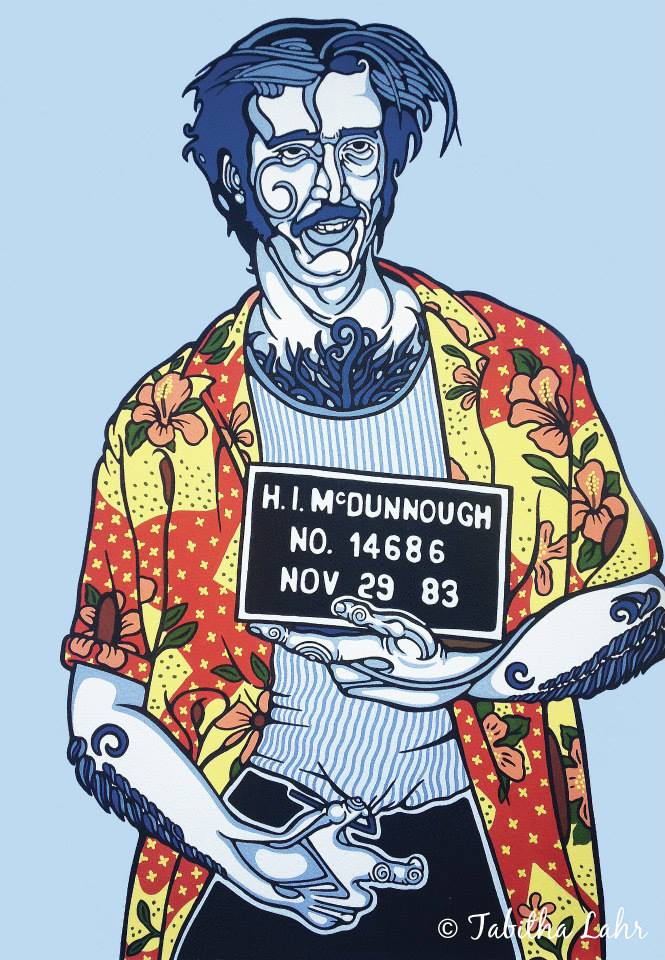 I have to say that outside of Bill Murray, I never thought of my paintings as humorous! Perhaps that’s my personality coming out without me even realizing it. Kind of like how a conservative looking artist creates odd art, and the outward eccentric artist creates conservative looking art.
I have to say that outside of Bill Murray, I never thought of my paintings as humorous! Perhaps that’s my personality coming out without me even realizing it. Kind of like how a conservative looking artist creates odd art, and the outward eccentric artist creates conservative looking art.
What I hope that viewers take away from my work is to enjoy the form of a person’s face. We’re all afraid of getting old, but every line is really beautiful. And every little detail is important.
What is the single most important thing you have learned from a mentor about your art and the (your) creative process?
That it’s important to not be too uptight when you draw. I’m an artist who loves, loves control, which is why my paintings are incredibly neat, and the brush stroke is absent.
I had a drawing instructor named Jack Potter at The School of Visual Arts, who absolutely disliked my work a lot (laughs). He would walk behind me as I painstakingly worked on a portion of the nude model’s head for like a half an hour and would yell, “If you want to draw things that the mid-west would like you don’t belong in my class!” I would then look over at the girl who was sitting next to me, who was his favorite, and she would be scribbling and smearing red oil pastels all over the paper. Her model drawing looked liked a blobby alien smudge to me. I then decided to just scribble for the rest of the semester, which was interesting because his class was four hours long. Once I started scribbling, Potter left me alone.
I have to say that in the moment it felt like a waste of time, but after the semester was over and I stopped scribbling, drawing the way I preferred to draw was 500% better. So I thank Jack Potter for loosening me up!
Can you share with readers one little known fact about you and your art?
I’m not sure there are any little known facts about me! (laughs) I’ve been told that I resemble a human digital news feed. I’ll tell you everything at some point if you stand in front of me long enough…Maybe that even though I’ve been painting with gouache for 20 years, I still have to look up how to spell it every single time I need to write the word. Even when I wrote this sentence.
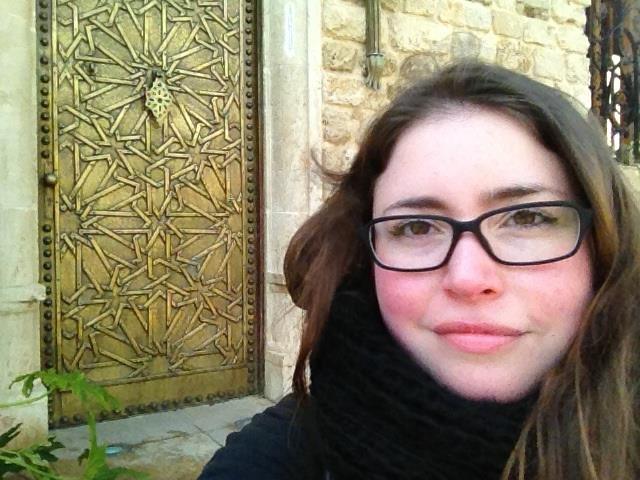 Tabitha Lahr, Jaffa, Israel, 2014
Tabitha Lahr, Jaffa, Israel, 2014
Looking to make one of Tabitha’s works your own? You can find her at the following upcoming shows:
Oddville! A Festival of the Awesomely Strange, Saturday, November 14th at American Steel Studios, Oakland, CA
Sinister Sweet: The Tim Curry Art Show, Saturday, December 12th at The Art Church, Los Angeles, CA.
Can’t make either of these? Find her at her website: www.tabithalahr.com